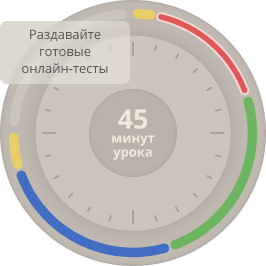Machine code or machine language is a set of instructions executed directly by a computer's central processing unit (CPU). Each instruction performs a very specific task, such as a load, a jump, or an ALU operation on a unit of data in a CPU register or memory.
Просмотр содержимого документа
«Презентация "Machine code"»
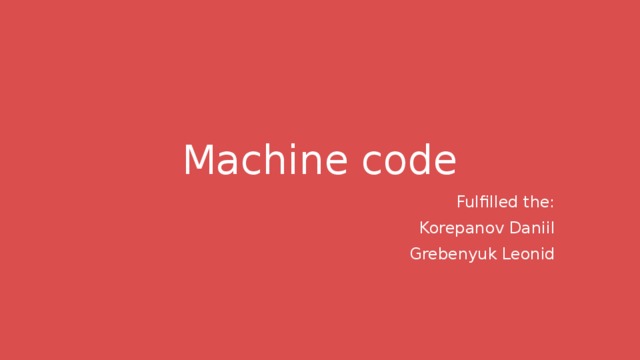
Machine code
Fulfilled the:
Korepanov Daniil
Grebenyuk Leonid

Machine code
Machine code or machine language is a set of instructions executed directly by a computer's central processing unit (CPU). Each instruction performs a very specific task, such as a load, a jump, or an ALU operation on a unit of data in a CPU register or memory.

In program
A computer program is a sequence of instructions that are executed by a CPU. While simple processors execute instructions one after another, superscalar processors are capable of executing several instructions at once.
.code
begin:
mov ax,@Data
mov ds,ax
mov ax,y
imul z
cwd
idiv u
add ax,v
sub ax,w
mov x,ax
mov ah,4ch
int 21h
end begin

Program flow may be influenced by special 'jump' instructions that transfer execution to an instruction other than the numerically following one. Conditional jumps are taken (execution continues at another address) or not (execution continues at the next instruction) depending on some condition.

Practical programs
All practical programs today are written in higher-level languages or assembly language. The source code is then translated to executable machine code by utilities such as compilers, assemblers, and linkers, with the important exception of interpreted programs, which arenot translated into machine code.

However, the interpreter itself, which may be seen as an executor or processor, performing the instructions of the source code, typically consists of directly executable machine code (generated from assembly or high-level language source code).

Assembly languages
A much more readable rendition of machine language, called assembly language, uses mnemonic codes to refer to machine code instructions, rather than using the instructions' numeric values directly. For example, on the Zilog Z80 processor, the machine code 00000101 , which causes the CPU to decrement the B processor register, would be represented in assembly language as

Exapmle
The MIPS architecture provides a specific example for a machine code whose instructions are always 32 bits long. The general type of instruction is given by the op (operation) field, the highest 6 bits. J-type (jump) and I-type (immediate) instructions are fully specified by op . R-type (register) instructions include an additional field funct to determine the exact operation. The fields used in these types are:

For example, adding the registers 1 and 2 and placing the result in register 6 is encoded:
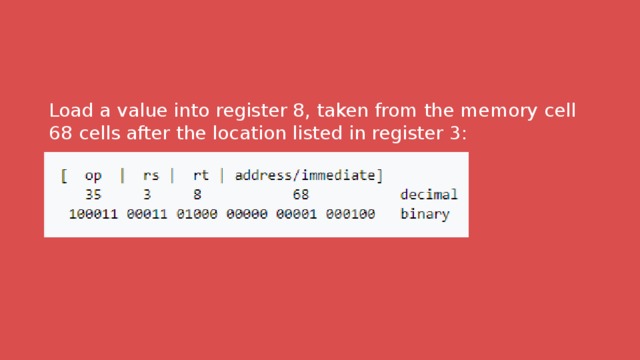
Load a value into register 8, taken from the memory cell 68 cells after the location listed in register 3:
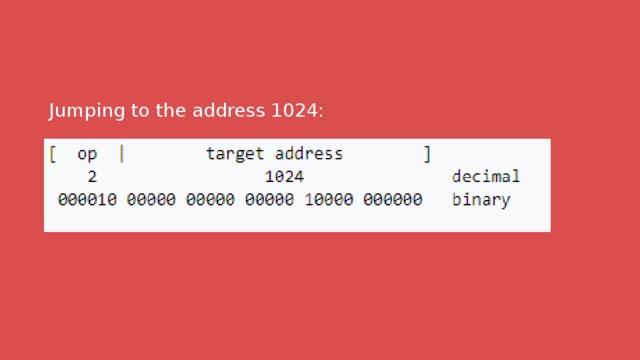
Jumping to the address 1024:
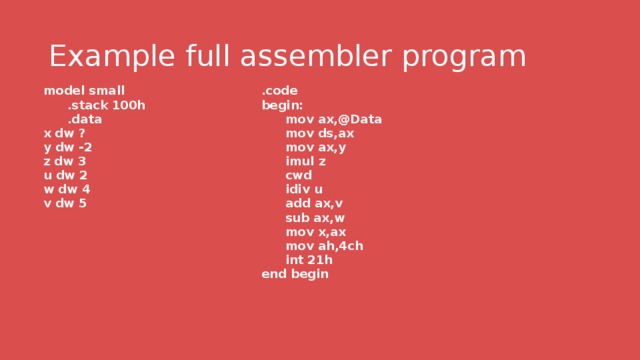
Example full assembler program
model small
.code
.stack 100h
begin:
.data
x dw ?
mov ax,@Data
mov ds,ax
y dw -2
mov ax,y
z dw 3
imul z
u dw 2
cwd
w dw 4
idiv u
v dw 5
add ax,v
sub ax,w
mov x,ax
mov ah,4ch
int 21h
end begin


